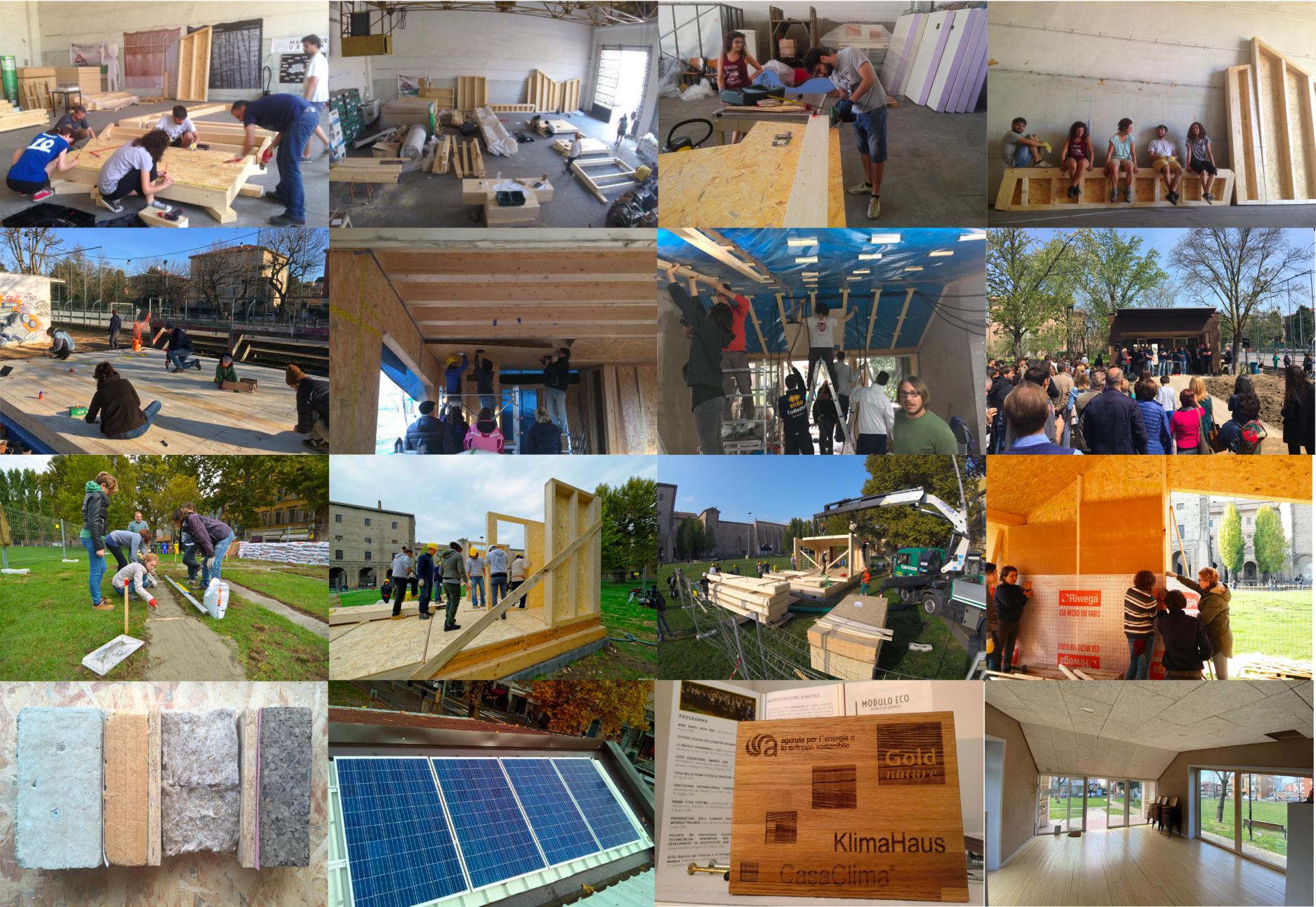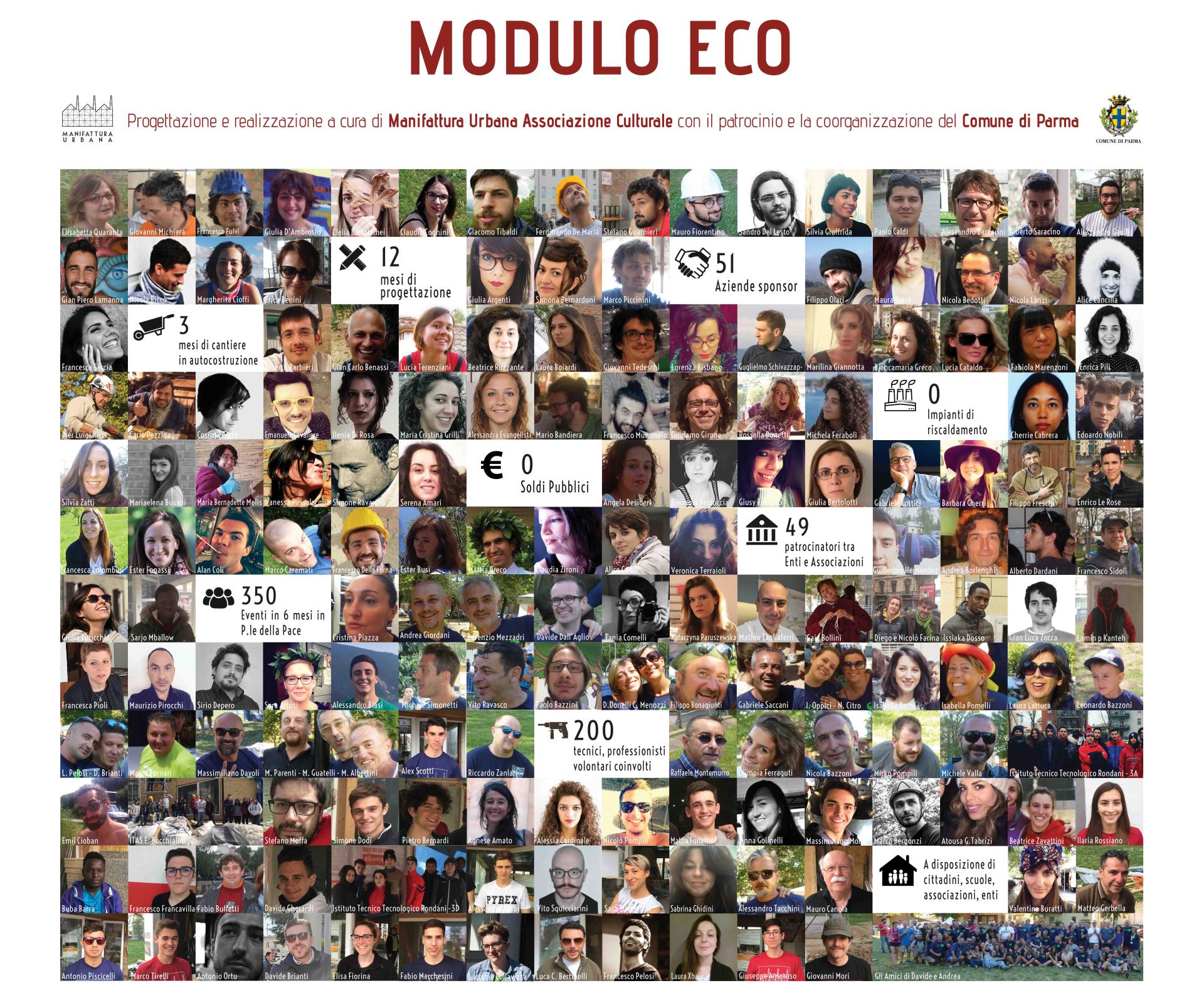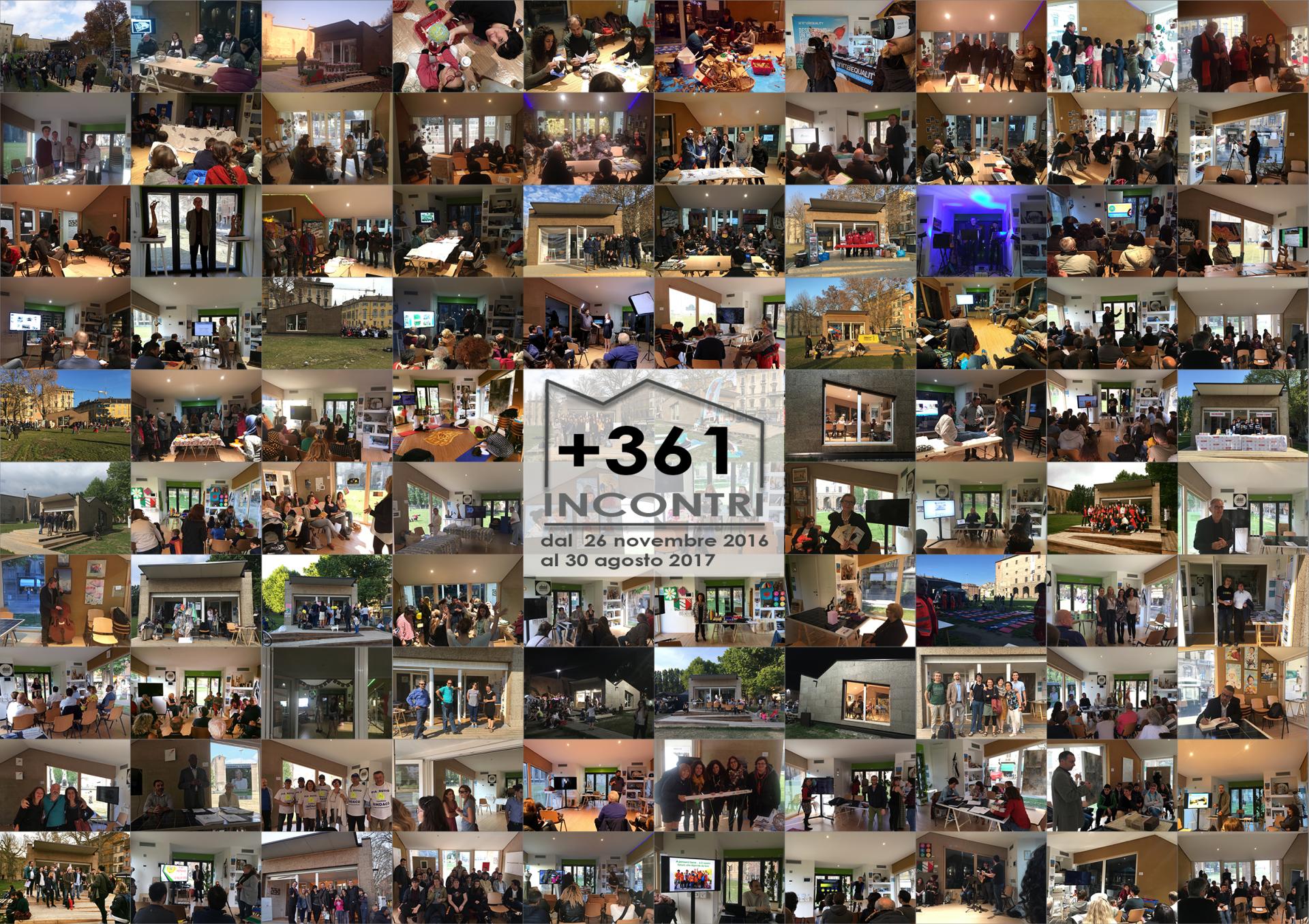Modulo Eco
Basic information
Project Title
Full project title
Category
Project Description
Pavilion built by volunteers without the use of public money as a dissemination and teaching tool on the issues of environmental, social and economic sustainability. It is a space for the neighborhood and citizenship where citizens, associations and informal groups can meet and network for free. It is a place to carry out social and cultural initiatives, essential for socialization and for a process of reappropriation of the city by those who live there.
Project Region
EU Programme or fund
Description of the project
Summary
Pavilion built by volunteers without the use of public money as a dissemination and teaching tool on the issues of environmental, social and economic sustainability. It is a space for the neighborhood and citizenship where citizens, associations and informal groups can meet and network for free. It is a place to carry out social and cultural initiatives, essential for socialization and for a process of reappropriation of the city by those who live there.The project was drafted in 2015 by a group of volunteers, experts in different fields.
It took about one year to gather all the necessary materials, donated by companies interested in sponsoring the project.
The pavilion was broken down into simpler elements, and actual construction began in Jan 2016: each element was the focus of didactic self-construction workshops, which were kept in a warehouse. The pavilion was finally assembled in a square in the center of Parma, where it was opened in November 2016. The temporary structure was to remain only 3 months, but, given the success, the stay was extended for a total of 9 months during which 361 free meetings were organized. The transfer from Parma city center to Parco Testoni in via Mordacci, took place in November 2017 and is part of a community project by the Crocetta district in collaboration with the Centro Giovani Esprit together with ANSPI Crocetta and the informal group "Amici di Davide e Andrea ”, again under the patronage of the municipality of Parma. The Manifattura Urbana association with its volunteers offered to disassemble, reassemble and then donate the pavilion to the neighborhood. Cariparma Foundation funded the relocation and educational / training processes aimed at the regeneration of the Testoni park, a green space outside the historic center, which was in a state of decay.
Key objectives for sustainability
The Eco Module was created precisely to show everyone, especially citizens, that you can build a building that does not emit anything into the atmosphere, that you can have a low environmental impact with regard to the materials used and that outdoor spaces are very comfortable if I use certain materials. like raw earth and wood. Wood was used as structural material, wood fiber, glass wool, hemp as insulators and the external coating is cork. A garden roof was built on the roof to mitigate the city summer heat. A solar greenhouse in the front facing south in winter being closed becomes a place where the sun warms the air makes that space accessible and usable while in summer it is open.
Key objectives for aesthetics and quality
The project is the result of a careful analysis both of adaptation to the place and formal in order to make the building recognizable and at the same time discreet and inserted within the park. Numerous architects and engineers participated in the project.
Key objectives for inclusion
The idea of self-building with students and citizens of the neighborhood the precise purpose of making the presence of the Eco Module more and more shared, to acquire a sense of identity for it. Many schools and students participated in the construction in addition to the young people who usually live in the Testoni park. During the construction which lasted 6 months, we never had a vandalism. Once the space was inaugurated, it was made available to those who asked for its use while waiting to donate it to the Municipality of Parma, a donation that should take place in the coming months.
Results in relation to category
The construction of the Module took place with a participatory process with the aim of including the citizens of the Mordacci district to regenerate the Testoni Park which also presented degradation phenomena. The Eco Module was built with the help of students and citizens with the specific intent of re-creating a sense of community and belonging. The Eco Module remains available to the city and the neighborhood: citizens, schools, associations and clubs have the opportunity to meet, network, promote events and initiatives. Overall, more than 200 volunteers participated in the two projects and constructions, including local entities and associations that gave their patronage and supported the project, including the Italian Ministry of the Environment.
How Citizens benefit
The Eco Module was built with the help of students and citizens with the specific intent of re-creating a sense of community and belonging. The Eco Module remains available to the city and the neighborhood: citizens, schools, associations and clubs have the opportunity to meet, network, promote events and initiatives. Overall, more than 200 volunteers participated in the two projects and constructions, including local entities and associations that gave their patronage and supported the project, including the Italian Ministry of the Environment. Once built and inaugurated, the keys were handed over to associations and citizens who organized numerous meetings.
Innovative character
The project born with the idea of being a regenerating space for a park is at the same time a vehicle of information and dissemination of the ecological environmental through its very low impact technology.The materials used in the construction are natural and with very low impact: raw earth , hemp and wood promote well-being inside. The quality of the air is guaranteed by the presence of a controlled mechanical ventilation system that purifies the incoming air and recovers its heat, furthermore it has been a particular coloring that eliminates pollutants called airlite. Consumption is controlled by a home automation system available and visible to all while on the roof there are both photovoltaic panels and a garden roof.



